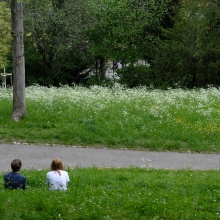A multidisciplinary team of researchers and practitioners working together in the context of the H2020 EU-funded project Urban Nature Labs (UNaLab, https://unalab.eu/en) recently published an article about European’s preferences and use of urban greenspaces before and during the COVID-19 pandemic.
Green and blue spaces are crucial aspects of urban areas and can help improve the resilience of cities in light of global climate change and the biodiversity crisis, while also providing opportunities for nature experiences that support public health. These socio-ecological services provided by urban green and blue spaces have been highlighted by the COVID-19 pandemic and its associated stressors. Understanding people’s preferences regarding urban green and blue spaces, how they are used, and how this use may change during times of crisis is important to help inform the planning, design and management of green and blue spaces that best support both people and nature.
Therefore, we conducted a survey-based pan-European study to enhance the socio-ecological understanding of urban green and blue spaces. We found that greenspace visit and outdoor recreation frequencies were associated with respondents’ (N=584 from 15 countries) geographical location, dominant type of neighborhood greenspace and greenspace availability during the pandemic, but not their sociodemographic background nor their perception of greenspaces. In general, people visited greenspaces often, but Southern European residents reported lower greenspace visit and outdoor recreation frequencies before and during the pandemic than Northern Europeans. Additionally, Southern Europeans also reported having few neighborhood greenspaces and low greenspace availability during the pandemic.
Regarding outdoor recreational activities, we found that walking and running were the most common activities before the pandemic with the most frequently stated purpose of time spent outdoors being restorative in nature (i.e. relaxing or calming down). Additionally, most Europeans had positive perceptions of urban green and blue spaces and preferred structurally diverse and natural or unmanaged greenspaces.
Our results highlight that urban green and blue spaces should be equitably distributed within urban areas and readily accessible for all people. Furthermore, co-creative design approaches, as well as the management of green and blue spaces, should consider differences in regionally specific preferences and cultural traditions to optimize the ecological and public health benefits of urban green and blue spaces.
Link: https://besjournals.onlinelibrary.wiley.com/doi/10.1002/pan3.10419
Citation: Jakstis, K., Dubovik, M., Laikari, A., Mustajärvi, K., Wendling, L., & Fischer, L. K. (2022). Informing the design of urban green and blue spaces through an understanding of Europeans' usage and preferences. People and Nature. https://doi.org/10.1002/pan3.10419


